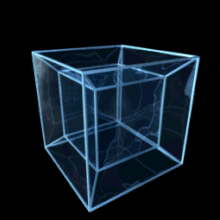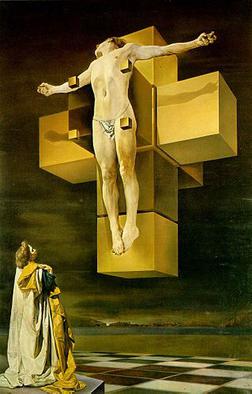Let’s start with the old chestnut – “If a tree falls in the forest, and there’s no one around to hear it, does it make a sound?” According to the dictionary, “sound” is the vibrations traveling through a medium that are detected by the ear. (I broadened the definition a bit to allow for vibrations traveling through water or an iron bar.) Based on the dictionary definition, the answer is “no.” The tree falling does indeed generate vibrations in the air, but we require a working ear to say that those vibrations are “sound.” (Or, how about changing the question to, “If someone hearing impaired has their hearing aid turned off, is there a sound?” The person is there to see the tree fall, but still doesn’t hear it.) If we change “sound” to “noise,” does this make a difference to our answer? No, because the dictionary definition of a noise is “a sound, especially a loud or unpleasant one.”
However, if we look at that tree, it has obviously fallen over. And, to be precise, if we had taken photos of the trees over an extended period of time, we’d be able to point to the tree in one picture where it is still standing, and another where it is on its side, and say, “yes, it fell over, it didn’t grow on its side like that, and God didn’t make the world from scratch starting with the tree already on its side.” But, unless you’re a lumberjack, or standing in the woods in the middle of a strong storm, it’s very rare for someone to be walking through the woods exactly at the time that a tree within hearing distance decides to fall over. We would say that that’s quite a coincidence; that someone was in the woods to witness the tree falling incident.
But, is it? People walk through wooded areas all the time, and if there are enough trees in the area, then branches and whole trees drop to the ground often enough to be considered a measurable occurrence. And, sometimes these two thing coincide. That is, they happen at roughly the same time and place. Strictly from a statistical standpoint, we can set a probability for someone being at the right place at the right time, through random chance. Under these conditions, is it still a coincidence that we are the ones in the right place to witness the event happening? Not really. We can be amazed by the event; we can be amazed by how unlikely it is that we are the ones to witness the event, and not someone else, and we can comment on how we might have missed the event if we’d been walking by a little earlier or a little later, for whatever reasons. But, deterministically, the event itself was inevitable.
Let’s take this one step further with another chestnut. “How many people do you need in a party so that there’s a better than 50% probability that two of them will have the same birthday?” The answer is 23. Think about that. How many times have you been in a group, or worked in a company with people broken up into groups, where there have been more than 23 in the group? (Things are more interesting if the groups don’t always have the same 23 people all the time.) In how many of those gatherings did everyone announce their birthdays to see if there were any pair-ups? If the answer is “none,” then can we say there was a coincidence?
That is, an outsider tracking everyone’s personal data and movements may know which two people were in the same room at the same time and had the same birth day, but the “coincidence” only comes in when those two people tell each other, or learn about it in some other way. We can then say that “a coincidence” is simply any random event that we have been made aware of.
In a sense, this is the same wording as for “a sound.” If we’re not aware of it, it’s not there. And increasingly, we’re becoming unaware of more and more things happening around us. Keeping our heads down, tuning out everything around us, listening to music players, reading text messages, checking facebook – we’re missing the extraneous random occurrences nearby. When those things do finally impinge themselves on our awareness, either we brush them off as annoyances, or get amazed that they’ve actually happened.
My point is that we live in a random universe, with billions of “entities” (people, animals, objects that are put in motion or become stationary) that are all on their own unique courses. We can invoke chaos theory here, by saying that these entities are following semi-fixed paths around their own “chaotic attractors,” and that statistically, those paths are going to intersect. They are mathematically deterministic. But, unless we “go out of our way” (in an intellectual energy sense, not a physical sense) to pay attention to what’s around us, we’ll miss the things that we can then turn into stories. I.e. – “You know, a funny thing happened to me. It was quite the coincidence…”
All of this is leading up to something of a let-down story. As mentioned in a previous blog entry, I didn’t know anything about Les Paul before reading “In His Own Words.” Asking for a book about him for my birthday was something of a whim, and I wasn’t expecting to get this particular book this time. And, I got 5-6 other books all in the same package, so I could have started reading any of the others first, but I picked up “His Own Words” because I’d thought it might have more to say about electronic sound production. Anyway, one-two days after finishing the book and writing up the review for the blog, the information was still fresh in my mind. I was in the Junkudo bookstore in Kagoshima, up on the 6th floor where they have import books and magazines in English, and the National Geographic collection, 101 Inventions That Shaped the World caught my eye, especially with the picture of the electric guitar on the cover.
So, I thumb through the book, glancing at the various things they cover, and I get to beer. The description of how beer came about and its relation to the production of bread is kind of a sketchy overview, but there’s only 1-2 pages dedicated to each topic, plus photos, so I’m not that surprised that the beer section is so superficial. Then I get to the part on electric guitars, and the main text focuses pretty much only on George Beauchamp’s development of the frying pan. Followed by one sentence saying that other electric guitar manufacturers included “Gibson, Les Paul and Fender.” Otherwise, Les, who made the electric guitar sound popular in his country and jazz recordings, isn’t mentioned at all.
If I hadn’t just finished reading Les Paul’s book, I wouldn’t have looked in the NG book, and I wouldn’t have known that Les Paul was a musician that just liked to tinker with other companies’ guitars to create his own “signature sound,” or that Gibson’s Les Paul line of guitars was just their way of signing on Les as their spokesman. All of which led to my going to Amazon and giving the NG book 3 stars out five for not doing enough fact checking. In other words, National Geographic’s “101 Inventions that Shaped the World” was dead-wrong about Les Paul’s manufacturing guitars, and completing missed the contributions to electric guitars and music recording that he did make.
Was this all just a silly little coincidence, or a random set of circumstances that I just happened to be paying attention to at the time? Whatever. My main point is that the world becomes a lot more interesting when you actively look for these kinds of things, because they are happening all around us all the time. Noise /Off.












